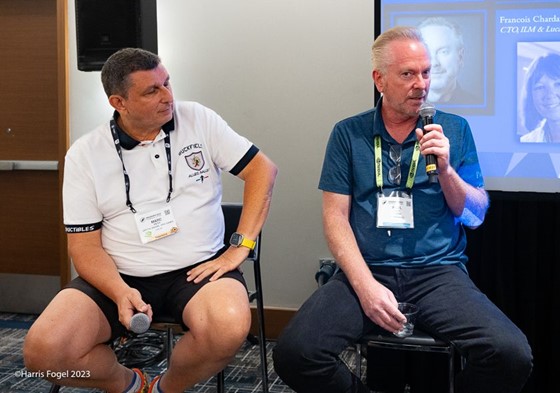
Paul Babb has spent more than 25 years helping to drive Maxon’s branding and expansion, first introducing its Cinema 4D DCC software in the US and then heading up its global marketing. Babb became a popular figure within the industry whose deep knowledge extends beyond the company and its growing list of software to the needs of the artists who use it. After witnessing so many changes within the industry (and at Maxon), he has handed over the keys to his office and is seeking a new challenge with that same passion that has served him well over the years.
What do we think? When I first entered this industry back in the late 1990s, Paul was one of those people who was clearly passionate about computer graphics. And throughout the years, he continued to exhibit that excitement and interest. At road shows and trade shows, he could be found demonstrating the latest tools and techniques under the Maxon banner, but it seemed that he was happiest when introducing and showcasing artists and their work—which became a mainstay at the Maxon booth. In this day and age when the epicenter of a company is the bottom line, Babb’s focus went beyond that to the artists themselves.
Paul Babb steps away from Maxon after 25-plus years
Maxon’s Cinema 4D has long been considered the little brother of 3D digital content creation software compared to the likes of Autodesk’s 3ds Max and Maya, but that has never been a hurdle for Paul Babb, former worldwide chief marketing officer/chief operating officer of Maxon’s US operations. That’s because he placed a high value on the quality of service over the quantity of users. As a company executive, he understood the necessities of business. Nevertheless, during his tenure at Maxon, he managed to put customers first and win over the loyalty of its software users—greatly extending the user base in the US.
Alas, after more than 25 years at Maxon—and even more within the 3D industry—Babb has stepped away from his long-standing position within the company, anxious to begin a new chapter, one that he hopes will keep him within the industry he so relishes. Babb had been slowly relinquishing his Maxon responsibilities since giving his notice late last year. His departure was formally announced by Maxon in January 2024; shortly after, the company revealed that it had hired Claudia Linsenmeier as chief revenue officer. In this position, Linsenmeier oversees all revenue functions within the company and its marketing organization.
Babb’s departure was not a secret, but neither was it advertised. So for some, his absence at NAB 2024 was somewhat surprising, given that he was always front and center at the Maxon booth, demonstrating the latest tools, introducing amazing Maxon artists, or simply chatting with folks. One thing you could say about Babb was that he was an enthusiastic evangelist, not only for Maxon but also the industry as a whole.
Babb has long been the public face of Cinema 4D in the US. However, before that, he had a somewhat eclectic background. “I am a high school dropout,” he says with a chuckle, opting to travel and see the world before returning to his studies, eventually attending junior college and earning an associate arts degree. Driven in part by his interest in musical and classical theater, he decided to further his education, receiving his bachelor’s degree at UC Santa Barbara and then his master’s in theater, film, and television (which, he says, spans “pretty much anything and everything from acting, to production, to screenwriting, and production”) at UCLA. In between acting gigs, Babb, a longtime California native, worked side jobs, including ad agency copywriting, exercising a skill that few had back then: Photoshop.
“That was when many of the art directors weren’t even exposed to Photoshop yet. So, there was an advantage to being technically adept,” Babb says, crediting his parents for this leg up. His father was a computer programmer, and his mother was an artist.
Babb’s family also owned a computer store, where he would help out on occasion. That was in the early days of the personal computer, when floppy disks were being used. Babb recalls the time he was sent to Apple to pick something up at a small warehouse in Cupertino, California, and was offered a beverage while walking in on some type of celebration. In attendance were Apple co-founders Steve Jobs and Steve Wozniak. As it would turn out, this was not the first brush Babb would have with industry greatness as it related to the field of computer technology. Little did he know then, there would be many more encounters in his future—in Hollywood and while at Maxon.
In 1991, Babb was cast as a pirate in Hook along with a Hook tie-in for Coke (in true Internet fashion, it still lives online here). He secured other Hollywood parts but found more success in his side jobs. While working briefly in sales at a telecommunications company, he computerized their outdated manual system and introduced modern marketing concepts. Next up was a stint in the marketing department at Capitol Records.
“I was the guy who would passionately talk about the artists and what they were trying to do, how they were approaching their audience, what they were trying to say, that sort of thing,” Babb recalls. “But I felt like I was that fly in the ointment because they were always talking about numbers and money.”
As luck would have it, a former colleague contacted Babb about an opening for a marketing manager at VFX studio/software company Electric Image. “That was my first entry into the 3D world,” he says, recalling sitting down on his first day with renowned artist Zax Dow (who later started Zaxwerks, maker of 3D Invigorator, ProAnimator, and more), from whom he learned 3D. That was early days for 3D in M&E, around 1993. A few years later, Play bought Electric Image, and Babb, familiar with the marketing prowess of the new owners (which included former NewTek execs), realized his position would be redundant under the new ownership and returned to ad agency work. His three-day workweek enabled him to take on freelance work. Enter Maxon in 1997, which filled that void.
At the time, Maxon, based in Germany, was in direct competition with NewTek and its LightWave 3D software, which, like Cinema 4D, ran on the Amiga platform before the company began offering a cross-platform version for both the Mac and the PC. One of Babb’s first orders of business was to show Maxon’s Cinema 4D at Macworld. So, he learned the product and put together some demo scenes that would show off the product—something that later would become a hallmark of the software at future trade shows. While representing Cinema 4D at a trade show in Germany, he was asked to start up Maxon US, serving as a distributor for the software. He agreed and left his job at the ad agency, working full time for Maxon in 1998.
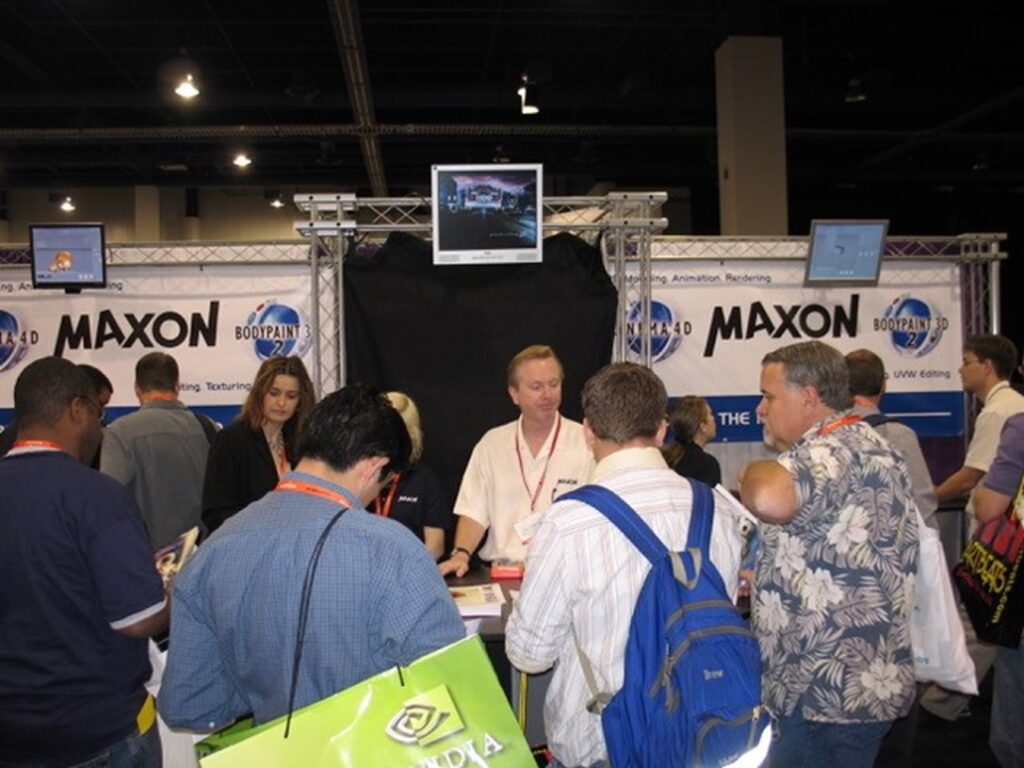
The evolution of Cinema 4D and Babb’s role
While the focus of this story is on Babb, it is difficult to separate the man from the company and software he devoted himself to for 25-plus years. Before Babb joined Maxon, Cinema 4D made an unconventional entry in the industry, much like Babb himself did. In 1989, brothers Christian and Philip Losch wrote a ray tracer for the Commodore Amiga and submitted it to Amiga Kickstart magazine’s monthly programming competition. The magazine, along with Atari ST Computer, was founded a few years earlier by three students under the company name Maxon. The program won the competition and, after some tweaking, became FastRay, which, after some build-out with modeling and texturing tools, became known as Cinema 4D.
As the Amiga began to phase out, a programmer built an architecture for a cross-platform version of the software. And by 1996, Cinema 4D Version 4 debuted for Amiga, Windows, and Macintosh, introducing Object Manager (the control center for objects and tags), still part of Cinema 4D today.
“[That version] was really innovative at the time; it was only about 5% OS-dependent. They built the whole application to be very stand-alone; it used very little of the operating system,” Babb points out. “The advantage was that it was really fast because it could tap into the hardware by bypassing a lot of the inefficiencies of the operating system and perform really well.”
Also, back then, Cinema 4D was able to take advantage of the Macintosh’s multiple threads before even Apple’s OS could, adds Babb.
Over the years since Babb joined the company, Cinema 4D was finely tuned and had greatly expanded, both in tools and user base. In 2000, Maxon became a subsidiary of Nemetschek, and things began developing quickly. A strategic alliance was formed with Adobe in 2013, and in 2018, Nemetschek assumed a majority ownership in Maxon as the three original Maxon owners retired and David McGavran came on as CEO. Philip Losch remains as CTO, and Christian Losch is still on the development team, though not in a leadership role. Longtime programmer Tilo Kuhn remains as senior Maxon fellow. Babb points out that a restructuring took place a few years ago—the company’s previous silo structure was replaced with a united structure and approach, with everyone at Maxon using the same systems and processes across the globe. And Babb expanded his role beyond the Americas to global head of marketing, also retaining his role as COO for US operations.
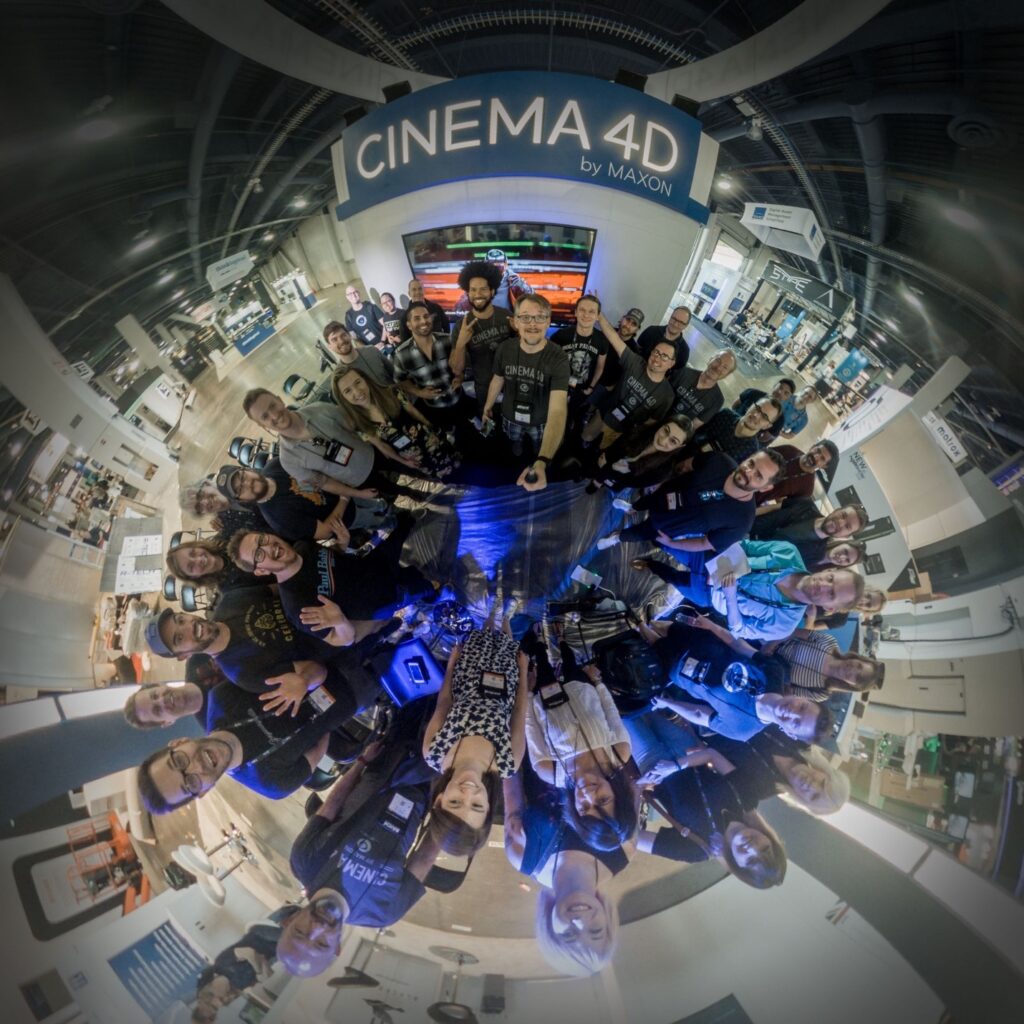
Consolidating all operations was no easy undertaking, but more changes were in the cards, as Maxon acquired the fully GPU-accelerated, biased renderer Redshift in 2019. A year later, Maxon merged with Red Giant, maker of various unique production tools. This brought Stu Maschwitz into the fold. More acquisitions followed, including the 2022 purchase of Pixologic’s ZBrush sculpting tool. In 2019, Maxon transitioned to a subscription plan for its software. And rather than issuing updates twice a year, Maxon instituted monthly revisions.
Indeed, there have been a number of innovations at Maxon during Babb’s tenure. In Babb’s opinion, the biggest one for the company was the MoGraph tools, which were built into Cinema 4D. And then, hand in hand, was the integration with Adobe After Effects. That bridge to After Effects opened new possibilities by introducing 3D to motion graphics artists. Product consolidation of the various versions of Cinema 4D also tops that list, followed by the acquisition of Redshift, which led to an update of the company’s rendering technology.
According to Babb, Cinema 4D’s 3D integration into the motion graphics workflow was a popular selling point in the US, helping to give Maxon a stronger foothold in the market. This perhaps gave rise to the misconception that the software was used mostly for motion graphics work, when in fact, it was a powerful 3D DCC package with an expansive tool set used in major studios for feature films and television, in addition to non-M&E projects.
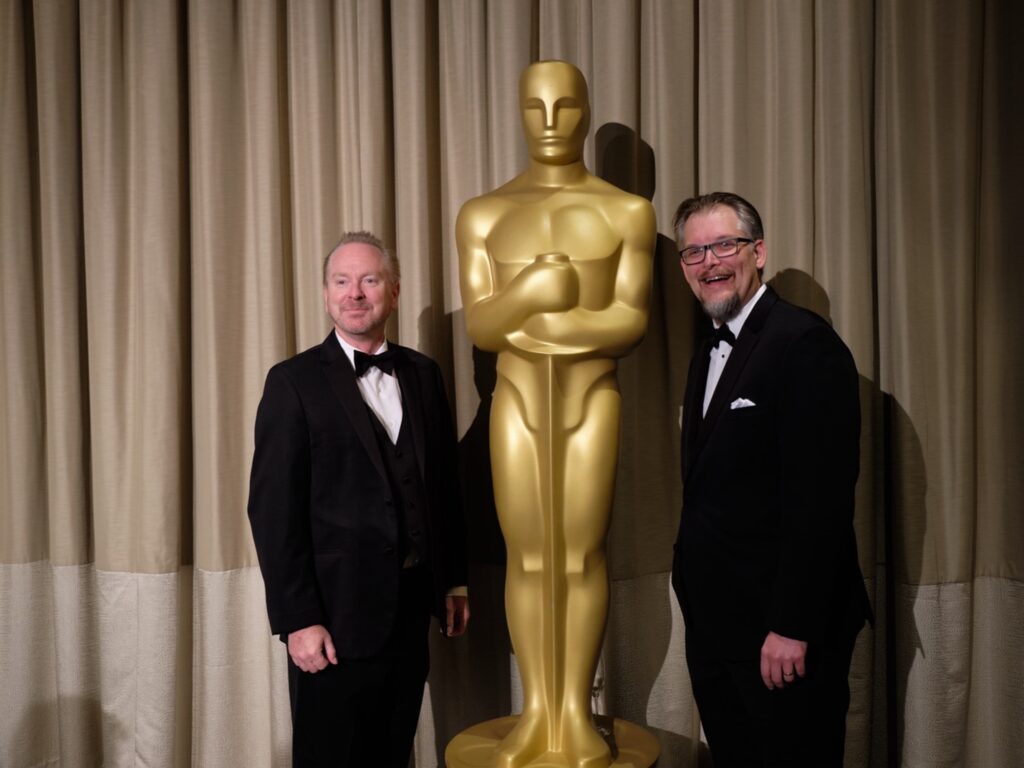
One of the highlights of Babb’s career at Maxon was when the MoGraph module was recognized by the Academy of Motion Picture Arts and Sciences for a Technical Achievement Award (Academy Certificate) in 2019. (ZBrush’s creator also received a Sci-Tech Award in 2014, several years prior to it being acquired by Maxon.)
Among Babb’s more memorable milestones while at Maxon was facilitating the bundle deal with Apple to include a free license of Cinema 4D Go (an entry-level version of C4D with Final Cut (the first two versions), which was initiated and completed all by Maxon US, headed up by Babb. Another was the bundling of Cinema 4D with After Effects.
At Maxon US, it wasn’t all work and no play. Babb believed in having fun, too, and he and his team came up with some crazy events to do just that.
- The Pinball Party at NAB, which is still going after 15-plus years. It has gotten so popular the company had to stop promoting it a decade ago.
- “Product Bash,” an event where software products were hung from the ceiling with prizes in them. The idea was the participant could choose the product that was giving them the most grief and smash the box with a plastic bat until their prize fell out (like a pinata). “So, it was both cathartic and joyous!” Babb says, adding that he got in trouble for that event with a CEO from one company who wasn’t happy that his product was included. Babb’s response: C4D was included as well.
- Ping Pong parties at Spin in New York and Los Angeles.
- The many road shows over the years, which provided an opportunity to meet with artists in person, most of whom would never attend a trade show. “So we went to them,” says Babb.
But the best, Babb says, is every time someone told me the positive effect Maxon, C4D, and/or myself had on their life or career.
It’s apparent in talking with Babb that he has high regards for his US team, which he has managed during his tenure at Maxon. “None of what I accomplished could have come to fruition without my amazing team in the US, especially and primarily Rick Barrett [group product manager]. He has always been my right-hand man and very instrumental in all Maxon successes,” he says.
Looking back and moving forward
Babb has witnessed a lot of changes and growth in the industry over the years. While at Electric Image, he says people were far less apt to share tips and techniques, whereas now, open source has become prevalent. “The thinking used to be that it took artists and studios months to figure something out and they weren’t about to give it away. But as the tools developed, people came to realize that in the end, the tools are just the paintbrush and that there is a great deal of artistry involved.”
Other big changes Babb has seen is the democratization of the tools. He says, “3D used to be really, really difficult, and it still is, but it’s more accessible than it’s ever been. Also, the speed at which people can work today is amazing, as the hardware capabilities have caught up with what software can do. Additionally, studios are realizing the benefit of letting artists choose the tools they want to use, rather than those the studio has standardized on.”
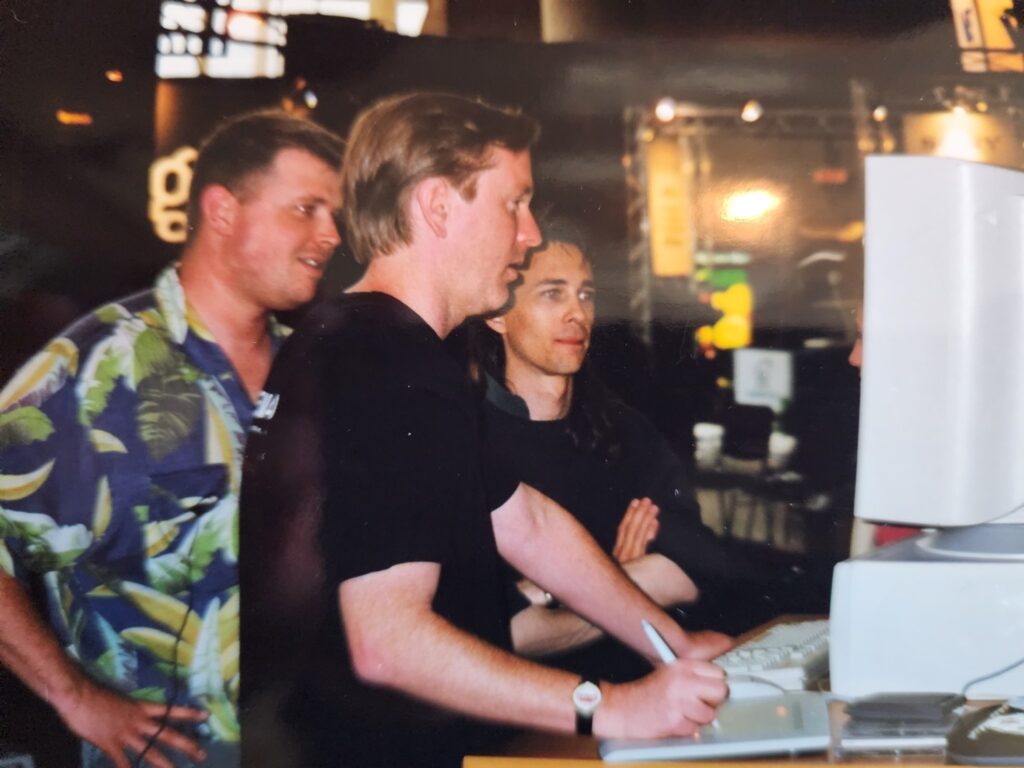
Not to date himself, but when Babb began working at Electric Image, the Internet was in its infancy. Today, it has given rise to cloud-based workflows, which have greatly impacted the way artists work. And now, AI is beginning to affect the way people create. “It’s a hot topic right now, obviously. Some people are freaking out, and that is completely understandable. But, it is one of those things you can’t ignore. It’s here. You’re going to have to live with it. So, let’s find a way that it can help you,” he advises.
Babb continues: “I hope that AI gets to a point where it’s not replacing the artist, but actually empowering them to be more creative. You know, get rid of the tedious mathematic parts of the job and make it easier for people to be innovative and creative, because AI at this point is not innovative, it’s derivative.”
When Babb began his relationship with Maxon all those years ago, there were dozens of 3D software packages on the market. In the years since, that number has dwindled, and he credits Cinema 4D’s longevity to the community that has sprung up around it.
Babb points out that as a company reaches a certain size, it tends to become more about business than the people. “I truly believe the industry has lost a little of the understanding that human beings are doing this work. It’s not all about numbers, and so many businesses are enamored with numbers that they’re forgetting what the whole business aspect is about, and that’s how to talk to the creative community,” he says.
It is that black-and-white short-term thinking that has worn Babb down. After all, as much as he was an executive, he was, and still is, a creative who cares deeply for this community.
“The best part of my job was seeing artists go from wanting to be in the industry, to being successful, to starting studios. We had a direct impact on other people’s successes, on their careers, on their lives. Part of me leaving is wanting to get back to that, getting back to the roots of working directly with people to help them be successful. And, help them achieve that vision of what they wanted to become in terms of an artist or creative,” says Babb. “It’s been satisfying to hear from people who said I had an impact on their careers.”
Babb understands that as companies grow, they no longer can do the same things as they did as a small company. Nevertheless, he began to miss that small company and its effect on individuals, human beings. “That is why I decided to leave,” he adds.
As Babb begins looking for his third act, he hopes it is within this industry. “This industry is family to me,” he adds. Meanwhile, Babb has accepted an invitation to be an advisor for Rive, which he describes as an extremely innovative company with a unique new offering—a new graphics format, also called Rive—that provides a significant breakthrough in the creation of real-time vector graphics, Babb says.
While Babb has provided a steady hand at Maxon over the years, his replacement, Claudia Linsenmeier, undoubtedly will make her own mark at the company. Meanwhile, Dave McGavran, another familiar face at Maxon, continues in his leadership role. Those who came aboard from Red Giant are lending their own cachet. And the Losch brothers continue to add continuity not often seen at this level of the industry. So, while Babb will be missed dearly, Maxon remains on solid ground with a solid, knowledgeable team to guide them forward.